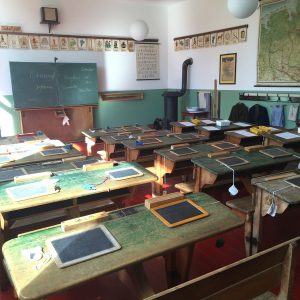
Libraries are already a place of infinite learning. With a little enhancement, libraries can become the community’s classroom. We just need to provide the space and resources to allow exploration to happen. This can take many forms, from formal classes, to passive programming. In order to reach all community members, libraries must cater to different learning styles “visual, auditory, and kinesthetic/tactile” (Ballance, 2013). We need to invest, both time and money, to create a learning environment for all sections of the community (Matthews, 2013). The best way libraries can accomplish this is by forming partnerships throughout the community (Nygren, 2014). With careful planning the learning will happen naturally though exploration.
Here are a few ways Libraries can become classrooms for the community:
Toddler play group

Play groups serve two different users: the parent/guardian, and the toddler. Playing is a very important part of learning. The children learn by exploring the toys, and they learn by associating with the other little ones. While this is happening, the parents are also interacting and learning from each other, and from the library program. They are introduced to age appropriate toys and they are learning how important play is to their child’s development. (Peck, 2014)
Hands on learning programs
Programs like STEM lab, makerspace, and other passive programming provide learning in a very individual way. Learners, young and old, can explore at their own pace and each one has a unique experience.
Curated Collection
A curated collection would allow learners to explore a specific topic. Items related to a special topic could include books, media (like documentary DVDs), QR codes to websites, brochures and other handouts. The topics could change every 3 or 4 months and include themes such as climate change, history of an event, specific person, or local interest. The possibilities are really endless.
Digital Resources
A library’s digital resources can bring learning to the library and provide many opportunities for patrons to explore. Digital tools can teach a new language, help with homework, provide career building resources (resume building, etc), teach digital literacy, offer virtual classes in everything from life skills to crafts, and so much more. The possibilities are only limited by the library’s budget.
Programs
A program doesn’t have to say “educational” in its title to be so. Many programs provide learning experiences. STEM education may come in the form of building blocks, or a build a robot program. A coffee klatch provides an informal way to bring adults together to talk about various topics. Craft programs teach little ones small motor skills, and how to follow directions, and adult arts and craft programs give them the opportunity to explore their creativity.
Study Opportunities
More formal forms of education can happen in a library. One such example is a study hall. Giving a space and resources for students to do homework can help with many educational needs. A tutoring service can be offered in a library. The tutors can be volunteers from the local high school or college. Another option is to have a STEM lab, or media lab in the library for people to explore and learn.
Tech Help
In today’s world, understanding technology is mandatory. Many people need help in this area. A library can offer this service in a formal technology class, or in drop in tech help. Either way, this would be a great service to provide for the community. This would also be a good place to utilize high school or college volunteers.
Storytime
Libraries have been hosting storytime for many years. It is well documented that children that are read to, do better in school. They have better attention spans, better vocabulary, and better comprehension. Children that are learning to read can benefit from a “read to a therapy dog” program. Reading to a dog is much less intimidating than reading to an adult, and more fun too! As children get older, book clubs for fourth or fifth graders can be a great learning opportunity as well as a great social opportunity for children. (Peck, 2014)
All of this would be more successful if community partnerships are formed (Mathews, (2013). Local fire departments can give fire safety talks. A local restaurateur can give cooking demonstrations or classes. Libraries can partner with the Health and Human services department to give talks. Schools can be a great partner for libraries. High school or college students would be great help for drop in technology help.
As someone that has taught university classes for years, I can say that the best part of the Library as a classroom is that there is no grading to do. The patrons are there because they want to learn, not just to pass a test. This is where the real learning happens.
Sources:
Ballance, C. (2013). Mobilizing knowledge to create convenient learning moments.
Mathews, B. (2013). Curating learning experiences: A future role for librarians?
Nygren, Å. (2014). The public library as a community hub for connected learning.
Peck, P. (2014). Crash course in children’s services (Second edition.). Libraries Unlimited.
Leave a Reply